| 1. |
Disconnect the battery negative
terminal. |
| 2. |
Remove the air cleaner assembly.
(Refer to Intake and exhaust system - "Air
Cleaner") |
| 3. |
Loosen the drain plug, and drain the engine
coolant.
Remove the radiator cap to drain with
speed. |
| 4. |
Disconnect the over flow hose (A) from the
radiator.
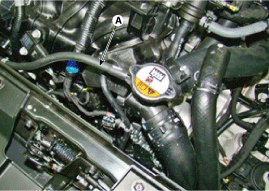
|
| 5. |
Disconnect the radiator upper hose (A) and
lower hose (B). |
| 6. |
Disconnect the ATF cooler hoses.
(Refer to Auto Transaxle System - "Auto
Transaxle") |
| 7. |
Remove the front bumper.
(Refer to Body - "Front
Bumper") |
| 8. |
Remove the head lamp.
(Refer to Body Electrical System - "Head
Lamp") |
| 9. |
Remove the upper mounting bracket
(A).
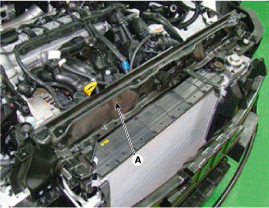
|
| 10. |
Disconnect the cooling fan controller
connector (A).
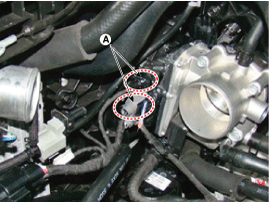
|
| 11. |
Remove the air guard (A) and then disconnect
the A/C condenser (B) from radiator.
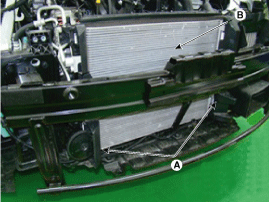
|
| 12. |
Disconnect the radiator assembly from
vehicle. |
| 13. |
Remove the cooling fan & reservior tank
(A) from the radiator (B).
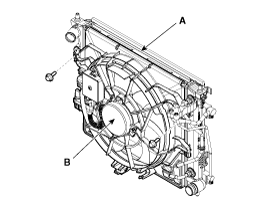
|
| 14. |
Install in the reverse order of
removal. |
| 15. |
Fill the radiator with coolant and check for
leaks. |
| 16. |
Put the radiator cap on tightly, then run
engine again and check for leaks. |
Radiator Cap Testing
| 1. |
Remove the radiator cap, wet its seal with
engine coolant, and then install it on a pressure
tester.
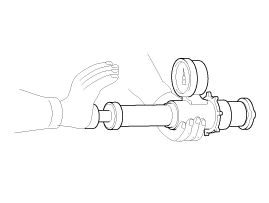
|
| 2. |
Apply a pressure of 93.16 ~ 122.58kpa (0.95 ~
1.25kg/cm², 13.51 ~ 17.78psi). |
| 3. |
Check for a drop in pressure.
|
| 4. |
If the pressure drops, replace the
cap. |
Radiator Leakage Test
| 1. |
Wait until engine is cool, then carefully
remove the radiator cap and fill the radiator with engine coolant,
then install a pressure tester on it.
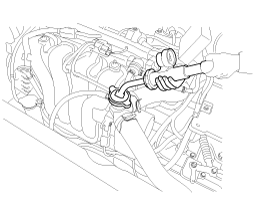
|
| 2. |
Apply a pressure of 93 ~ 123kPa (0.95 ~
1.25kgf/cm², 14 ~ 19psi). |
| 3. |
Inspect for engine coolant leaks and a drop in
pressure. |
| 4. |
If the pressure drops, check hoses, the
radiator and the water pump for leakage. If there is no leakage,
inspect the heater core, the cylinder block and the cylinder head.
|
| 5. |
Remove the tester and reinstall the radiator
cap.
|
Check for engine oil in coolant and/or
coolant in engine oil.
| | |